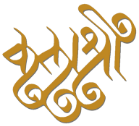
Dance is not just an art form, it’s a physically demanding discipline that requires strength, flexibility, and precision. Dancers, whether amateurs or professionals, put their bodies through rigorous movements, making it crucial to prepare and recover effectively. Warm-ups exercises play a pivotal role in a dancer’s routine, not only enhancing performance but also preventing injuries.
What Is a Warm-Up?
A warm-up is a series of exercises designed to prepare the body for physical activity. It involves gradually increasing the heart rate, warming up the muscles, and enhancing joint mobility. For dancers, whose movements are often dynamic and intense, a proper warm-up is vital to ensure their bodies are ready for the demands of their performance.
Warm-ups typically include cardiovascular exercises, joint mobilization, and specific stretches that mimic the movements to be performed during the dance routine. These activities serve to increase blood flow to the muscles, raise the body temperature, and activate the neuromuscular system.
How Long Should a Warm-Up Last?
The duration of a warm-up can vary depending on factors such as the intensity of the dance routine, the dancer’s experience level, and individual preferences. However, a general guideline for a dance warm-up is around 15 to 20 minutes.
The initial phase of a warm-up often involves low-intensity cardiovascular activities like jogging or jumping jacks. This gets the blood flowing and raises the heart rate gradually. Subsequently, joint mobilization exercises help increase the range of motion, preparing the joints for the diverse movements in dance. Finally, dynamic stretching, which involves controlled movements through a full range of motion, helps elongate and prepare the muscles for the dance routine.
Why Is Warming Up Before Dancing Important?
Warming up before dancing is important for a few key reasons. It helps prevent injuries by gradually preparing the body for the physical demands of dance. This is like a gentle wake-up call for the muscles and joints, making them more flexible and less prone to strains or sprains. A good warm-up boosts overall performance. It increases blood flow to the muscles, providing them with the oxygen they need to work efficiently. Warming up is like mental preparation, helping dancers focus and feel more confident. In simple terms, it’s like giving your body and mind a friendly nudge before hitting the dance floor, ensuring a safer and more enjoyable experience.
Warm-up Can Provide the Following Advantages
Increased Blood Flow
When dancers engage in cardiovascular activities during the warm-up, blood flow to the muscles is enhanced. This increased circulation delivers more oxygen and nutrients to the muscles, promoting optimal function and reducing the risk of cramps and fatigue during the dance.
Improved Muscle Elasticity
Dynamic stretching during the warm-up helps improve muscle elasticity. This is crucial for dancers, as it allows for a greater range of motion without causing strain. Elastic muscles are better equipped to handle the various movements and positions required in dance.
Joint Lubrication
Joint mobilization exercises included in the warm-up routine promote the production of synovial fluid, which lubricates the joints. Well-lubricated joints move more freely and smoothly, reducing the risk of stiffness and enhancing the dancer’s ability to perform complex movements.
Psychological Readiness
Beyond the physical benefits, warm-ups contribute to psychological readiness. Dancers often face performance anxiety, and a structured warm-up routine helps alleviate nervous tension by providing a familiar and focused preparation process. This mental preparation is invaluable for a dancer’s confidence and overall performance quality.
6 Essential Dance Warm-Ups
Jumping Jacks
Jumping jacks are a dynamic cardiovascular exercise often included in dance warm-ups, effectively elevating the heart rate and warming up the entire body. As dancers perform this rhythmic movement, they engage both upper and lower body muscles, promoting increased blood circulation and enhancing overall cardiovascular fitness.
Leg Swings
Leg swings are a dynamic stretching exercise commonly integrated into warm-up routines to improve hip flexibility and increase the range of motion in the lower body. Whether performed as front-to-back or side-to-side swings, this exercise helps dancers achieve the necessary flexibility for dynamic leg movements during their routines.
Lunges
Lunges are a versatile warm-up exercise that targets various muscle groups, including the quadriceps, hamstrings, and hip flexors. Incorporating lunges into the warm-up routine helps dancers enhance lower body strength, flexibility, and balance, preparing them for the demands of intricate dance movements.
Heel Raises
Heel raises, or calf raises, are a simple yet effective warm-up exercise focusing on the calf muscles. By lifting the heels off the ground in a controlled manner, dancers activate and strengthen the calf muscles, crucial for supporting the body during jumps and leaps in dance routines.
Shoulder Rolls
Shoulder rolls are a gentle warm-up exercise that promotes flexibility and mobility in the shoulder joints. Dancers perform controlled circular movements with their shoulders, relieving tension and ensuring that the upper body is ready for the diverse arm positions and movements required in dance.
Breathing Exercises
Incorporating breathing exercises into the warm-up routine is essential for preparing the respiratory system and enhancing lung capacity. Deep, rhythmic breaths help oxygenate the muscles, improve focus, and create a sense of calmness, allowing dancers to enter their performance with controlled and intentional breathing.
Conclusion
In the world of dance, where precision, flexibility, and strength are paramount, warm-ups are essential components of a dancer’s routine. The importance of warming up before dancing lies in its ability to prevent injuries, enhance performance, and promote overall well-being. Through increased blood flow, improved muscle elasticity, warm-ups prepare dancers physically and mentally for the challenges that lie ahead on the stage.
Immerse yourself in the enchanting rhythms and graceful movements of Kathak, the timeless Indian classical dance. With our Kathak Dance Classes in Mumbai, embrace a transformative journey of self-expression and cultural immersion. Unveil the magic of this vibrant art form as you discover the captivating beauty within. Join us today and step into the world of Kathak.
Have Questions
Unleash the Grace of Kathak Dance! Enroll Now for Inspiring Kathak Dance Classes and Embark on a Journey of Rhythmic Elegance.
